Alberta
Fast Action, And Fair So Far

Fast Action, And Fair So Far
All over the world, one of the first political acts after coronavirus declared itself was to shut down all sports events. Now, with the same coronavirus persisting, and in some cases expanding, its dismal influence, many of the same elected individuals are rushing to open those events as widely and as often as possible.
It’s obvious that presidents, commissioners and other leaders in the athletic world are doing their best to keep up with this mad charge to activity that features millionaires on local, national and international television. The majority agrees it is neither wise nor important to wait for fans to fill the seats before starting or replacing seasons in all major-league sports.
North America’s four most-watched pro sports – soon to be recognized as five, including soccer — have already declared preferred, possible or potential starting dates: officials in every case are ensuring that large or small COVID-19 outbreaks could force further adjustments and, of course, ultimate elimination of their entire project.
At this moment, baseball is dealing with the sad fact that many teams are dealing with fierce emergencies. A lot of programs have been shut down and there have been stated suspicions that some facilities will not be suitable for the 30 home games designated in a stormy agreement finally set by players and owners last week.
Like everyone else, the Toronto Blue Jays have standard concerns about staff and players contracting the virus, but finding a place for home games may turn out to be more urgent. Permission has been granted to train in Toronto for the scheduled 60-game season but some cautious souls still suggest it is more likely that the young Jays will be required to nest this season in nearby Buffalo or distant Dunedin, Fla. American infection numbers indicate the problem of bringing players across the border into Canada could become politically and medically improbable by the scheduled July 22 season opener.
Here in Alberta, the saga of the Blue Jays, as well as the fascinating basketball Raptors who will be competing by the end of July, fades in a dull colour by comparison with the Calgary Flames and Edmonton Oilers who open their official training camps on Monday.
A Stanley Cup playoff run could extend to as many as 33 games for survivors in the best-of-seven final, which will be staged entirely at spectacular Rogers Place. Only because of Alberta’s relative success in tamping down the coronavirus did the NHL finally designate Edmonton as a “hub city” after making it obvious from the beginning of all this talk that Las Vegas and Toronto (the other hub) were the favoured communities.
Almost from Day 1 after the NHL declared it would somehow present the 2020 Stanley Cup to a legitimate playoff champion, commissioner Gary Bettman insisted that safety was the “biggest issue and most serious concern” for all. Granting that some insiders were less than thrilled at the decision to involve so many teams in a one-series-loss-and-you’re-out scenario, he still believes the proper move was to involve teams that had not been officially eliminated when the season wrapped up on March 16.
“The competitive balance in our league is so extraordinary,” he said, “that we had to make sure it was for all to get a chance to win.”
Admittedly, the plan took effect in a massive hurry. Now, there is league-wide concern that one of the eight outsiders admitted to the playoffs might somehow win the Cup and wind up with a high draft choice – perhaps Number One. If that case, weaker teams who lose out can be expected to yell: “Not fair.!”
Alberta
Click here to help choose Alberta’s new licence plate design

Your province, your plate
For the first time in more than 40 years, Alberta is refreshing its licence plate with a Strong and Free motto, and the final look will be decided by Albertans.
From Oct. 15 until Nov. 5, Albertans can take part in a tournament-style online vote for a new provincial licence plate design that proudly reflects who we are every time we hit the road.
The new licence plate will be available in late 2026 and will be based on a “Strong and Free” theme, echoing the Latin motto of our province and reflecting Alberta’s bold identity, economic strength and deep-rooted provincial pride. The motto’s inclusion on the licence plates will also serve as a nod to Canada’s national anthem and Alberta’s position as a strong and sovereign province within a united Canada.
“From our wide-open landscapes to our entrepreneurial spirit, Alberta has so much to be proud of, and our new licence plate will reflect that pride. For the first time in four decades, Albertans will choose how we tell that story. I look forward to seeing which design is selected to show the world that this is the land of the strong and free.”
With options that include famous Alberta landmarks such as the Three Sisters Mountains, and long-standing symbols of our province’s core industries including agriculture and energy production, the potential plates each contain symbols of Alberta’s beauty, history and spirit.
In the first phase of voting, Albertans can vote for their favourite of eight unique concepts that incorporate Alberta’s unique landscape and history. Following the first phase, four designs will advance to the next round of voting where the top two will be selected, and subsequently, there will be a final vote for the winning plate concept. The winning new licence plate will be announced during the fall session of the legislature.
“Alberta is strong and free, and Albertans will have the opportunity to choose a new licence plate that captures that spirit. The new licence plate will be a fresh design that every Albertan will be proud to show off, whether they’re driving to work, heading to the lake or exploring North America.”
If an Albertan wants to replace their current plate for the new licence plate once it is released, they can voluntarily pay a $28 fee. Alternatively, Albertans could obtain a new plate on their vehicle registration renewal date at no additional cost. Motorists may also continue using the previous licence plate once the new licence plate is brought onboard, provided it is still in good condition.
Quick facts
- Alberta’s current licence plate was designed in 1984.
- In 2021, Alberta began a transition from painted to reflective plates with the same design.
- The new designs each incorporate reflective technology to improve readability for law enforcement and automated systems in low-light conditions, and also meet international standards for visibility, legibility and counterfeit resistance.
Related information
Licence plate designs. Click link above to vote
Alberta
Enbridge CEO says ‘there’s a good reason’ for Alberta to champion new oil pipeline
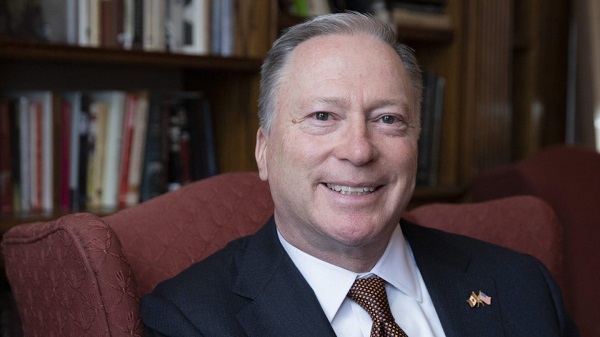
Enbridge CEO Greg Ebel. The company’s extensive pipeline network transports about 30 per cent of the oil produced in North America and nearly 20 per cent of the natural gas consumed in the United States. Photo courtesy Enbridge
From the Canadian Energy Centre
B.C. tanker ban an example of federal rules that have to change
The CEO of North America’s largest pipeline operator says Alberta’s move to champion a new oil pipeline to B.C.’s north coast makes sense.
“There’s a good reason the Alberta government has become proponent of a pipeline to the north coast of B.C.,” Enbridge CEO Greg Ebel told the Empire Club of Canada in Toronto the day after Alberta’s announcement.
“The previous [federal] government’s tanker ban effectively makes that export pipeline illegal. No company would build a pipeline to nowhere.”
It’s a big lost opportunity. With short shipping times to Asia, where oil demand is growing, ports on B.C.’s north coast offer a strong business case for Canadian exports. But only if tankers are allowed.
A new pipeline could generate economic benefits across Canada and, under Alberta’s plan, drive economic reconciliation with Indigenous communities.
Ebel said the tanker ban is an example of how policies have to change to allow Canada to maximize its economic potential.
Repealing the legislation is at the top of the list of needed changes Ebel and 94 other energy CEOs sent in a letter to Prime Minister Mark Carney in mid-September.
The federal government’s commitment to the tanker ban under former Prime Minister Justin Trudeau was a key factor in the cancellation of Enbridge’s Northern Gateway pipeline.
That project was originally targeted to go into service around 2016, with capacity to ship 525,000 barrels per day of Canadian oil to Asia.
“We have tried to build nation-building pipelines, and we have the scars to prove it. Five hundred million scars, to be quite honest,” Ebel said, referencing investment the company and its shareholders made advancing the project.
“Those are pensioners and retail investors and employees that took on that risk, and it was difficult,” he said.
For an industry proponent to step up to lead a new Canadian oil export pipeline, it would likely require “overwhelming government support and regulatory overhaul,” BMO Capital Markets said earlier this year.
Energy companies want to build in Canada, Ebel said.
“The energy sector is ready to invest, ready to partner, partner with Indigenous nations and deliver for the country,” he said.
“None of us is calling for weaker environmental oversight. Instead, we are urging government to adopt smarter, clearer, faster processes so that we can attract investment, take risks and build for tomorrow.”
This is the time for Canadians “to remind ourselves we should be the best at this,” Ebel said.
“We should lead the way and show the world how it’s done: wisely, responsibly, efficiently and effectively.”
With input from a technical advisory group that includes pipeline leaders and Indigenous relations experts, Alberta will undertake pre-feasibility work to identify the pipeline’s potential route and size, estimate costs, and begin early Indigenous engagement and partnership efforts.
The province aims to submit an application to the Federal Major Projects Office by spring 2026.
-

 Alberta2 days ago
Alberta2 days agoFact, fiction, and the pipeline that’s paying Canada’s rent
-
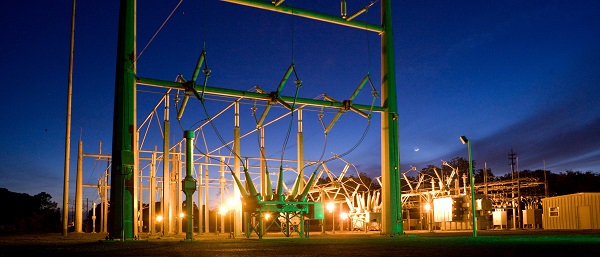
 Business2 days ago
Business2 days agoFinance Titans May Have Found Trojan Horse For ‘Climate Mandates’
-

 Energy1 day ago
Energy1 day agoIndigenous Communities Support Pipelines, Why No One Talks About That
-
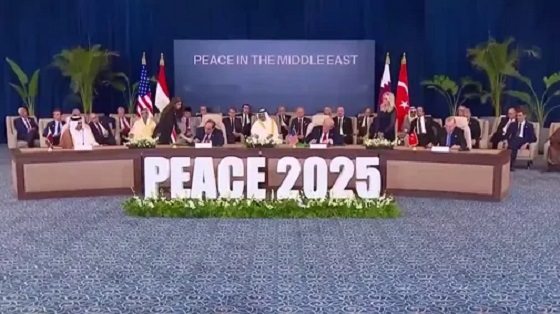
 International2 days ago
International2 days agoSigned and sealed: Peace in the Middle East
-

 Alberta1 day ago
Alberta1 day agoOil Sands are the Costco of world energy – dependable and you know exactly where to find it
-
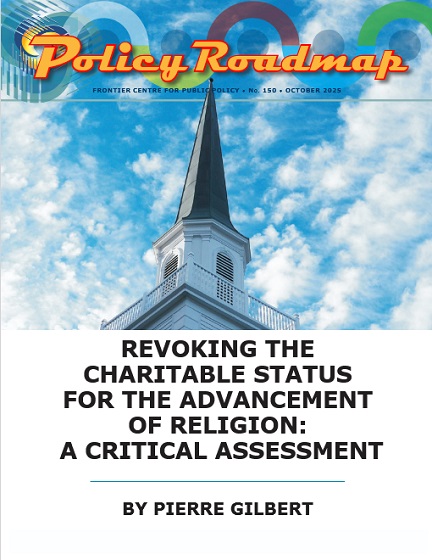
 Business1 day ago
Business1 day agoFinance Committee Recommendation To Revoke Charitable Status For Religion Short Sighted And Destructive
-

 International1 day ago
International1 day agoNumber of young people identifying as ‘transgender’ declines sharply: report
-
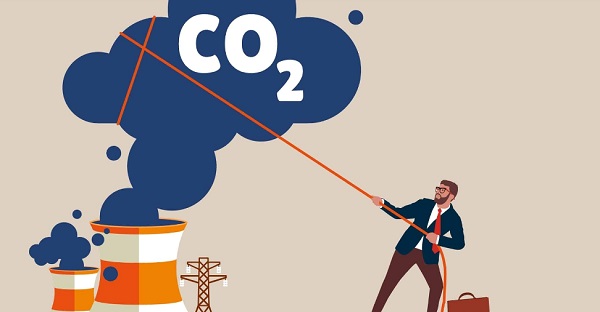
 Alberta1 day ago
Alberta1 day agoThe Technical Pitfalls and Political Perils of “Decarbonized” Oil






